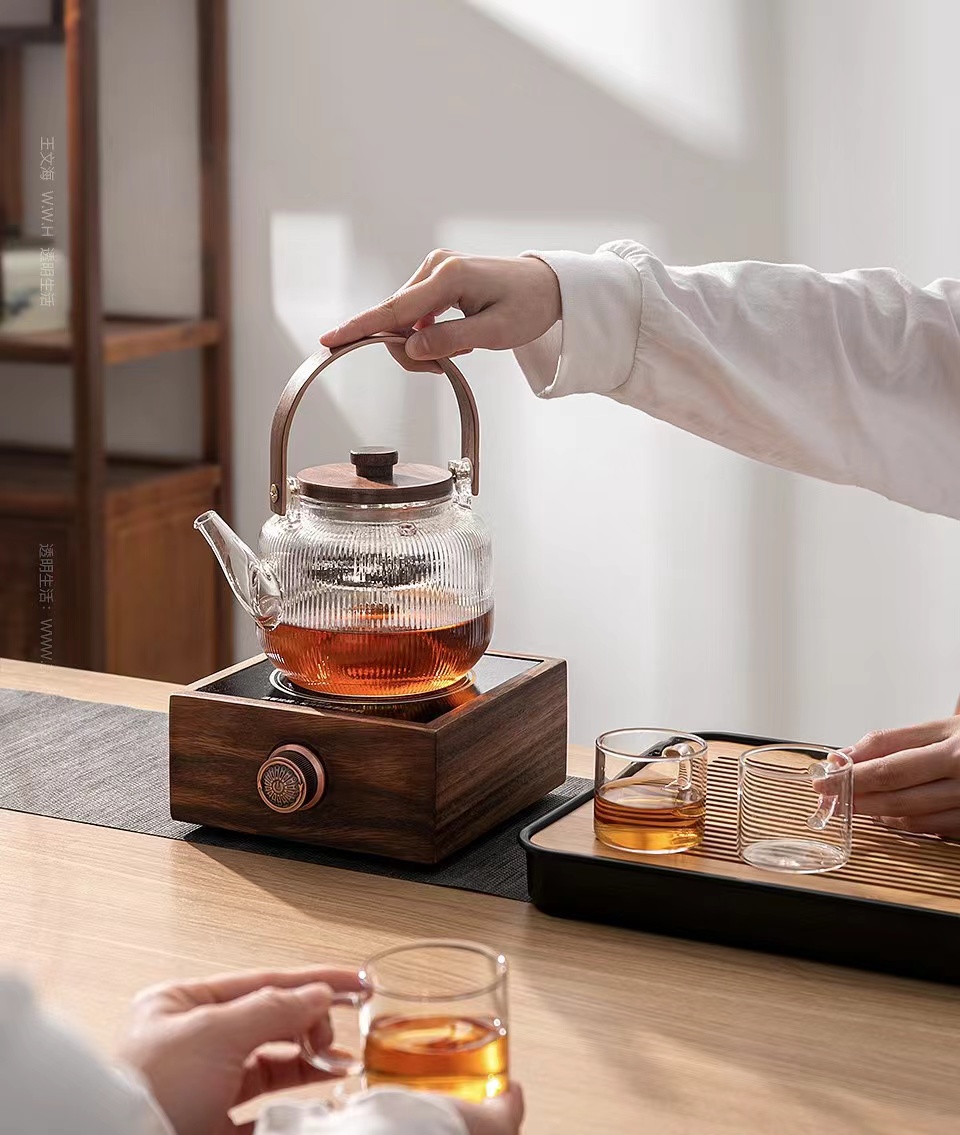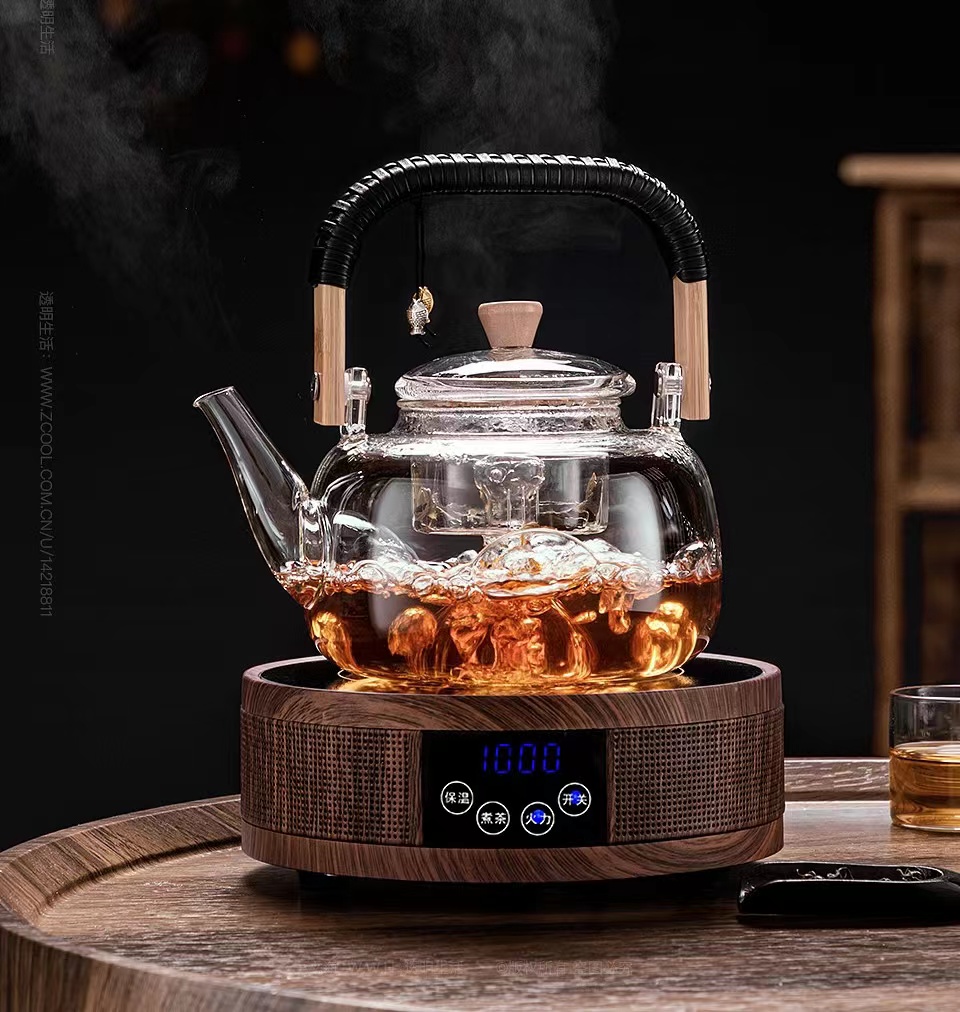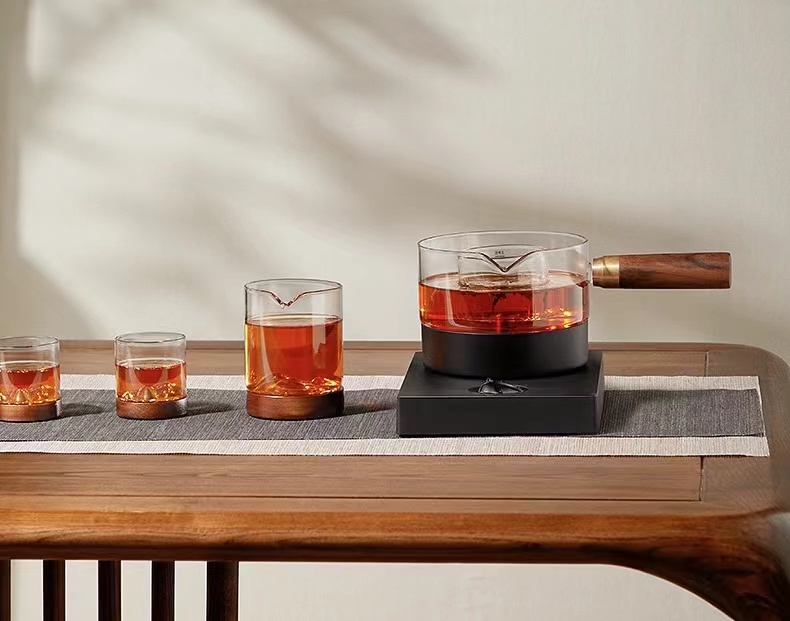Glass teapots are divided into ordinary glass teapots and high borosilicate glass teapots. Ordinary glass teapot, exquisite and beautiful, made of ordinary glass, heat-resistant to 100 ℃ -120 ℃. Heat resistant glass teapot, made of high borosilicate glass material, is generally artificially blown, with low yield and higher price than ordinary glass. It can generally be cooked over direct heat, with a temperature resistance of around 150 ℃. Suitable for directly boiling beverages and foods such as black tea, coffee, milk, etc., as well as brewing various green teas and flower teas with boiling water.
Generally speaking, a glass teapot is composed of three parts: the body, lid, and filter. The Chinese teapot body is also composed of the main body, handle, and spout. Generally, the spout of a glass teapot also has a filter to filter tea leaves. The material of glass teapots. The body of glass teapots is mostly made of heat-resistant glass, and the filter and lid are made of heat-resistant glass or stainless steel metal. Whether it is high borosilicate glass or stainless steel metal, they are all food grade green and environmentally friendly materials, and consumers can drink with confidence.
The characteristics of heat-resistant glass teapot products: fully transparent glass material, combined with meticulous handmade techniques, make the teapot always exude a charming brilliance unconsciously, which is truly attractive. Heating tools such as alcohol stoves and candles can be used for open flame heating without exploding. It can also be taken out of the refrigerator and immediately filled with boiling water, which is beautiful, practical, and convenient.

A simple method to distinguish between ordinary glass teapots and high-temperature resistant glass teapots
The operating temperature of ordinary glassware
Ordinary glass is a poor conductor of heat. When a part of the inner wall of a glass container suddenly encounters heat (or cold), the inner layer of the container expands significantly due to heating, but the outer layer expands less due to insufficient heating, resulting in a large temperature difference between the different parts. Due to the thermal expansion and contraction of the object, the thermal expansion of each part of the glass is uneven. If this uneven difference is too large, it may cause the glass container to shatter.
Meanwhile, glass is a highly rigid material with a slow heat transfer rate. The thicker the glass, the greater the impact of temperature difference, and the easier it is to explode when the temperature rises rapidly. That is to say, if the temperature difference between the boiling water and the glass container is too large, it will cause it to explode. So thicker glass containers are generally used at temperatures ranging from -5 to 70 degrees Celsius, or add some cold water and then hot water before pouring boiling water. After the glass container is warm, pour out the water and add boiling water, and there is no problem.
The operating temperature of high-temperature resistant glassware
The biggest characteristic of high borosilicate glass is its very low coefficient of thermal expansion, which is about one-third of that of ordinary glass. It is not sensitive to temperature and does not have the common thermal expansion and contraction of ordinary objects. Therefore, it has high temperature resistance and high thermal stability. Can be used to hold hot water.
Cleaning of glass teapots.
Cleaning a glass teapot set with salt and toothpaste can wipe away the rust on the cup. Firstly, soak the cleaning tools such as gauze or tissues, then dip the soaked gauze in a small amount of edible salt, and use the gauze dipped in salt to wipe the tea rust inside the cup. The effect is very significant. Squeeze toothpaste onto a gauze and use toothpaste to wipe the stained tea cup. If the effect is not significant, you can squeeze more toothpaste to wipe it off. After washing the tea cup with salt and toothpaste, it can be used.
Post time: Jan-15-2024







